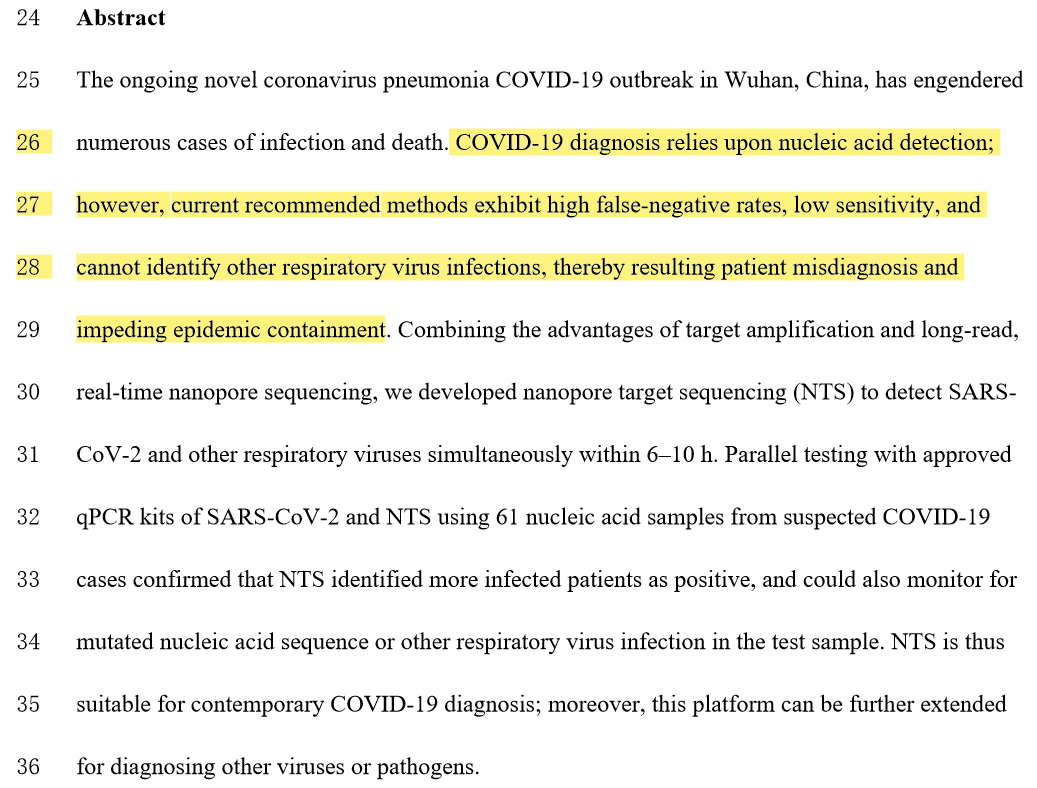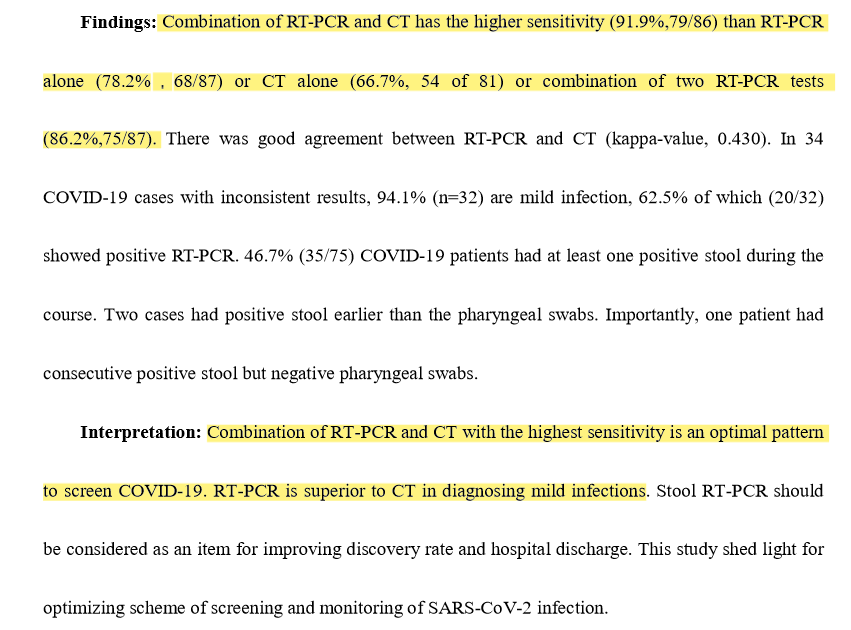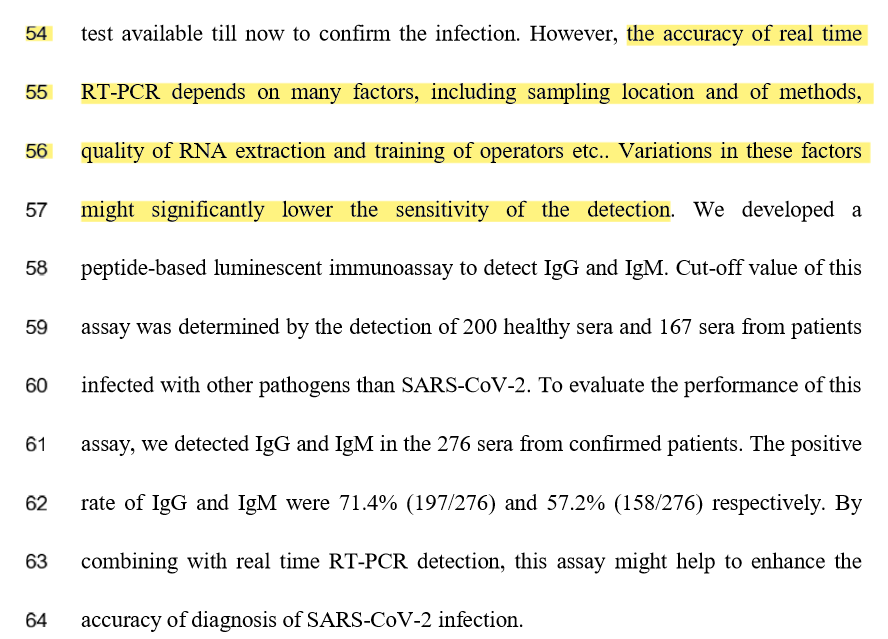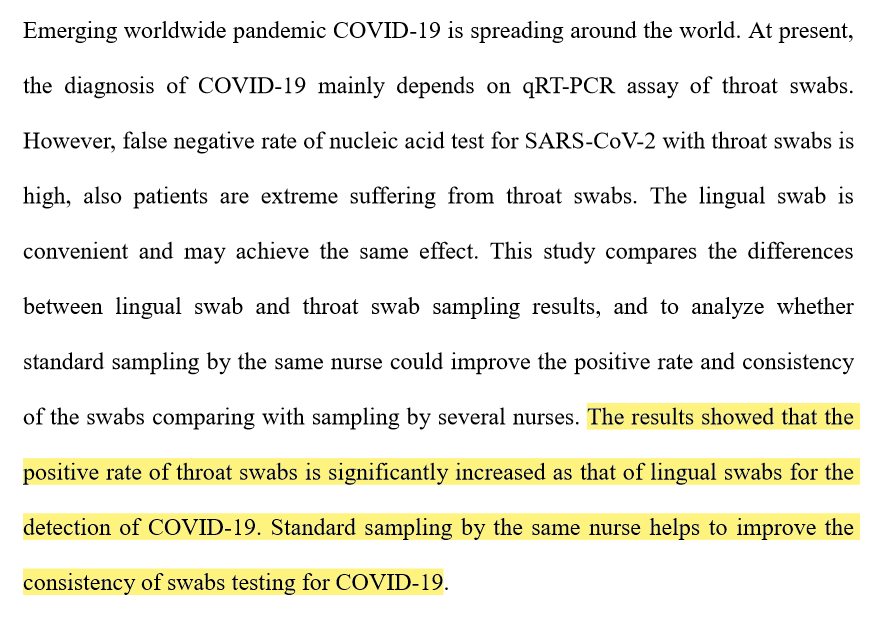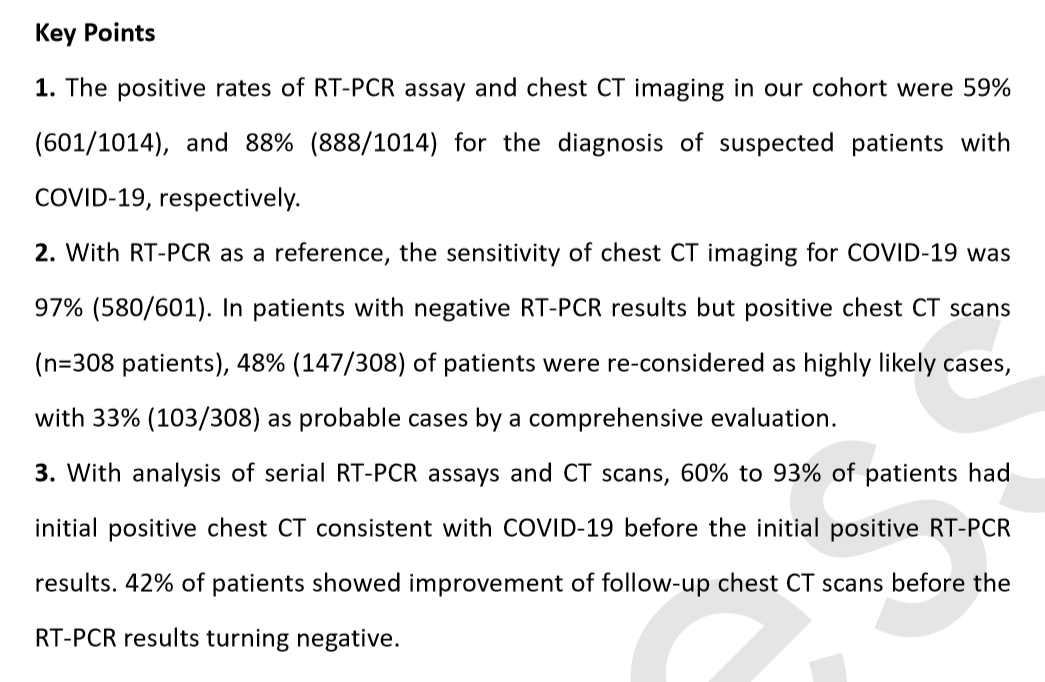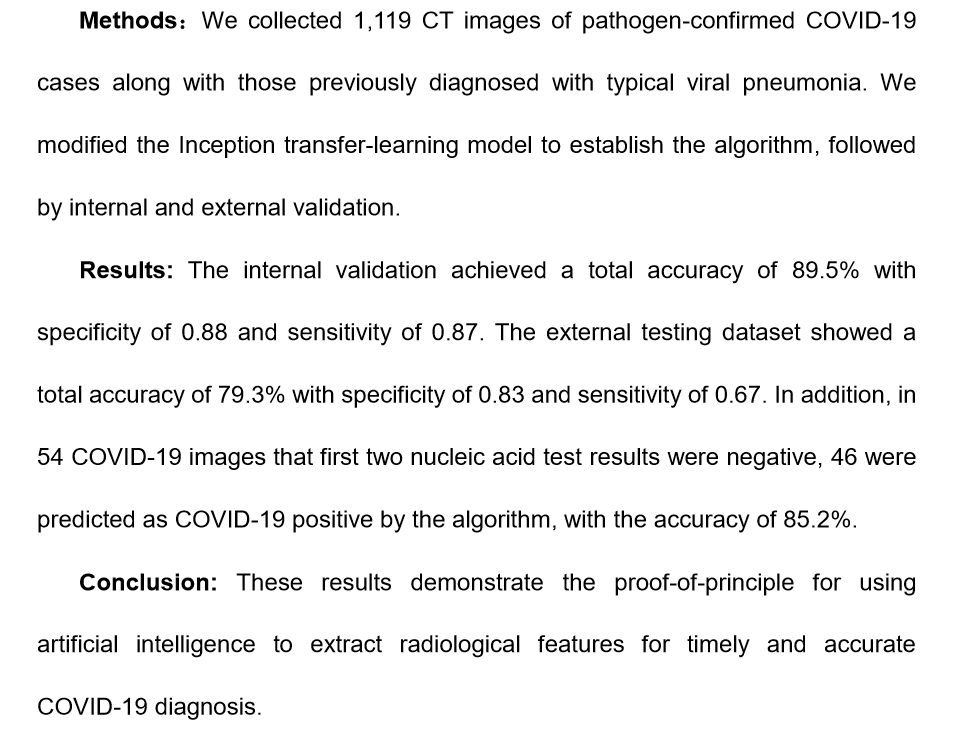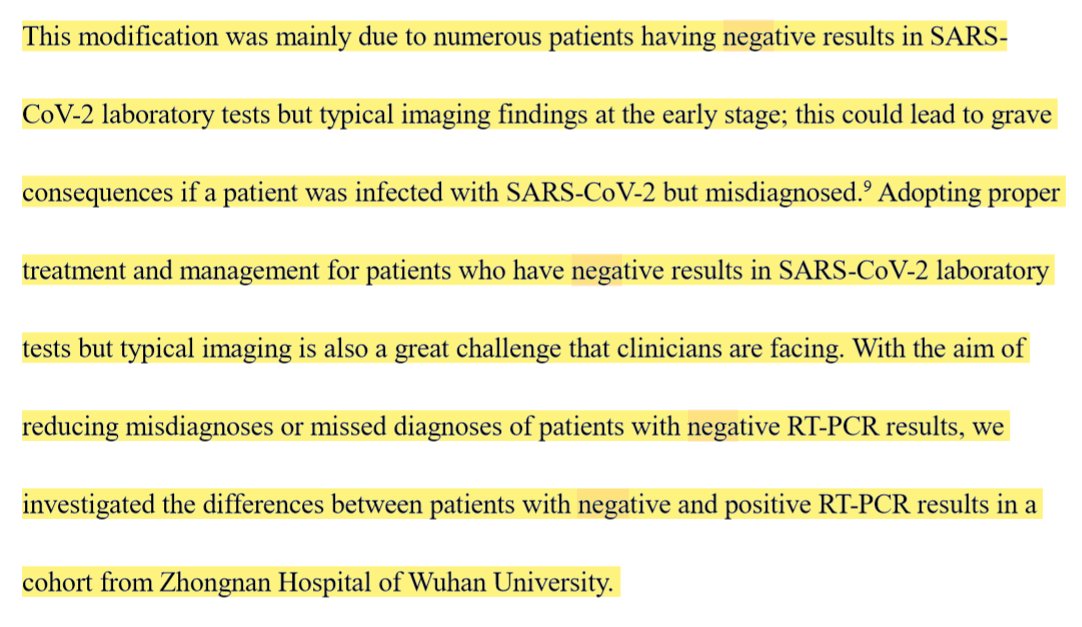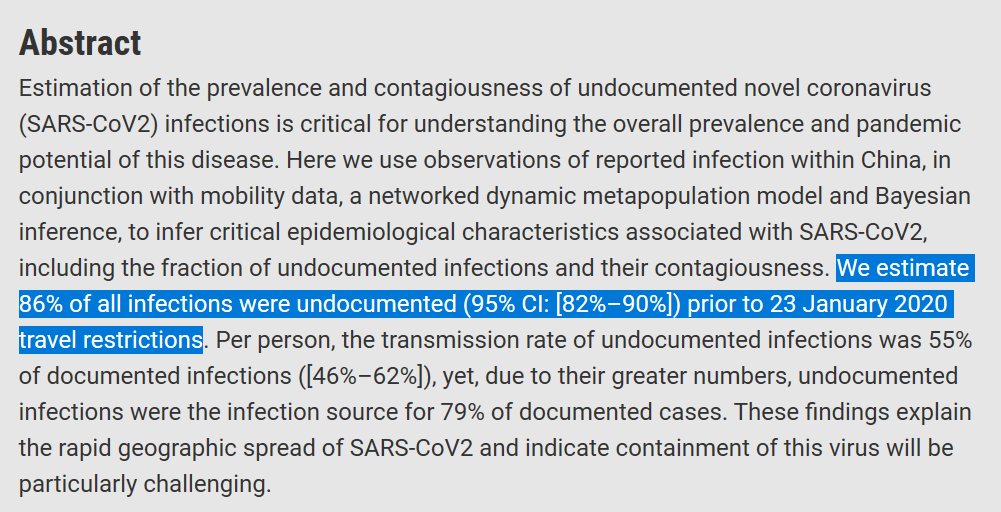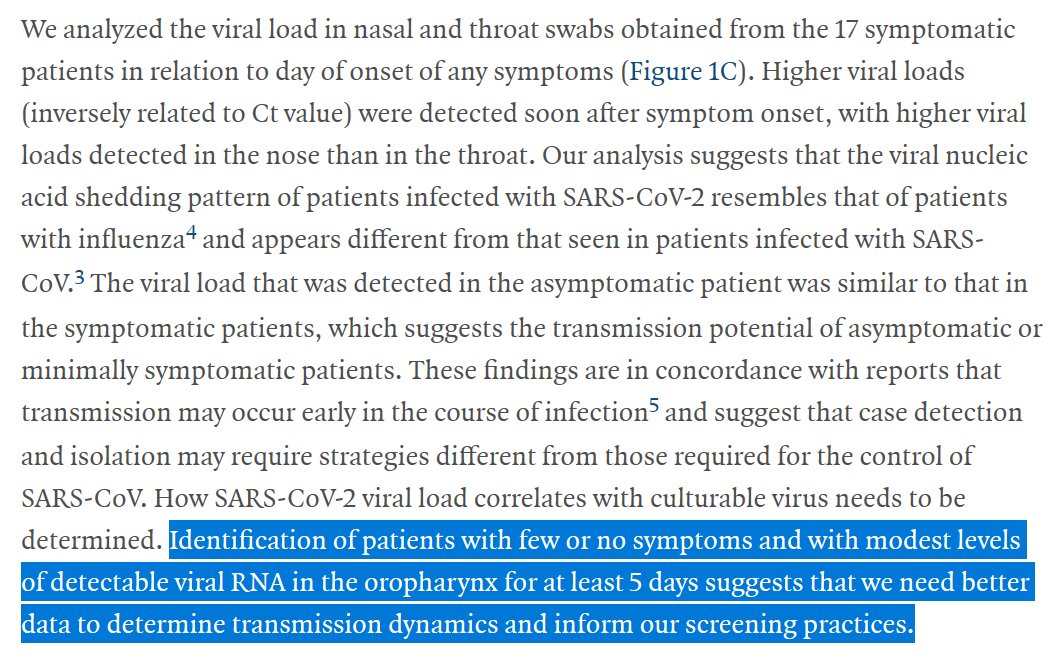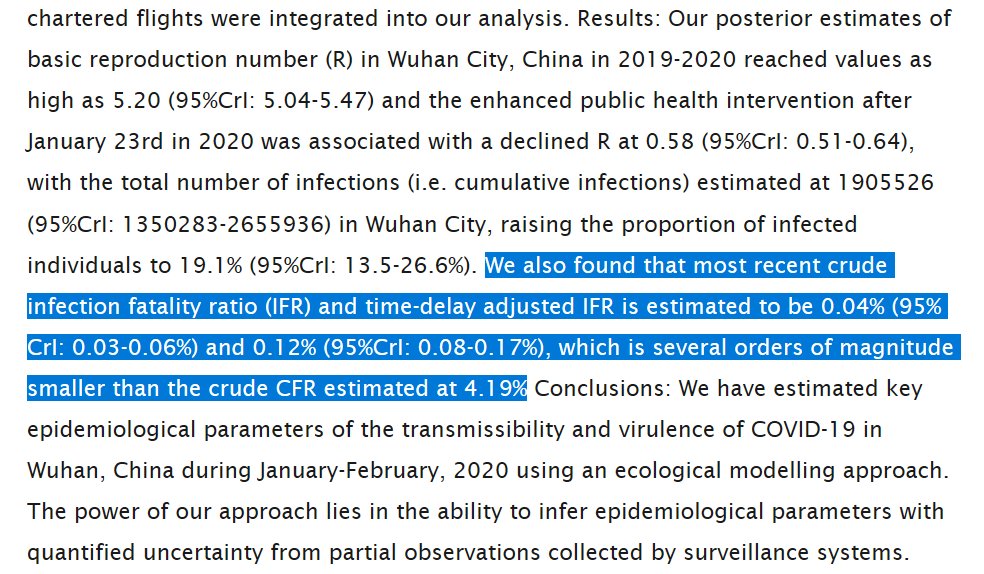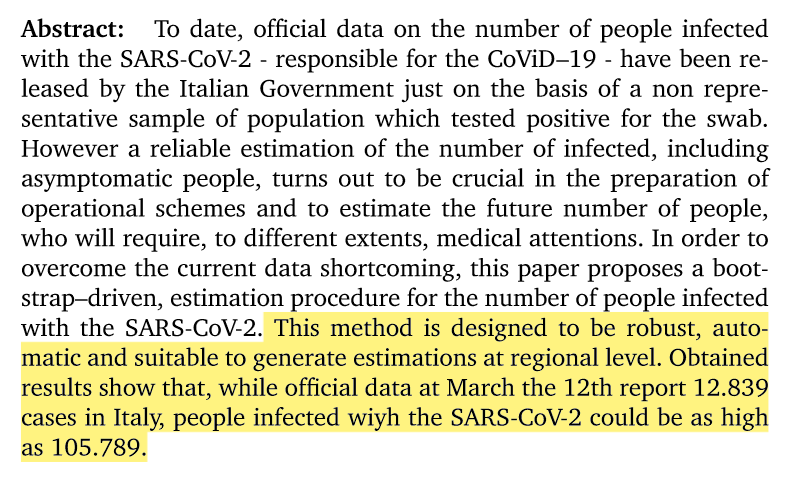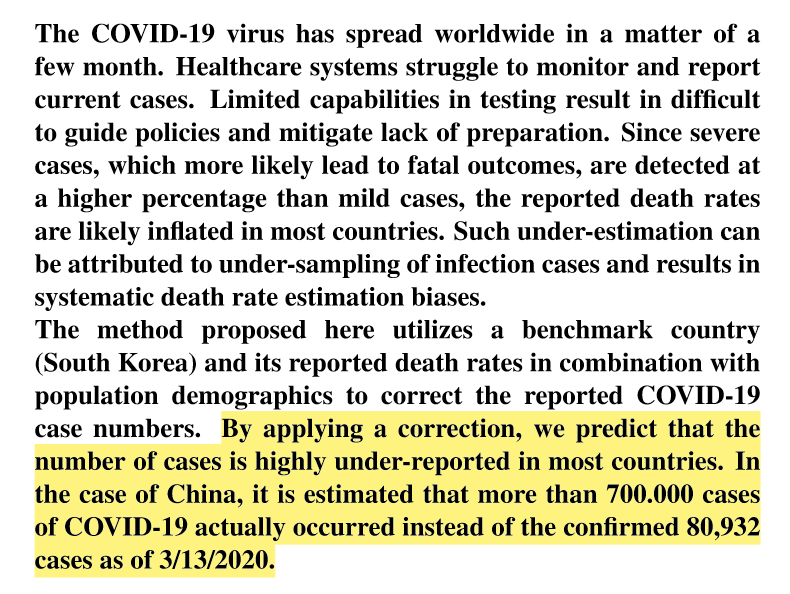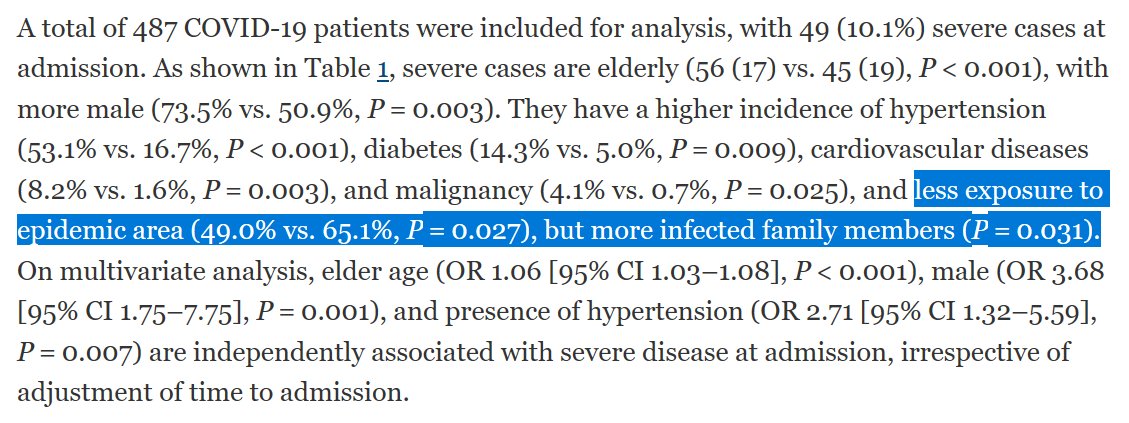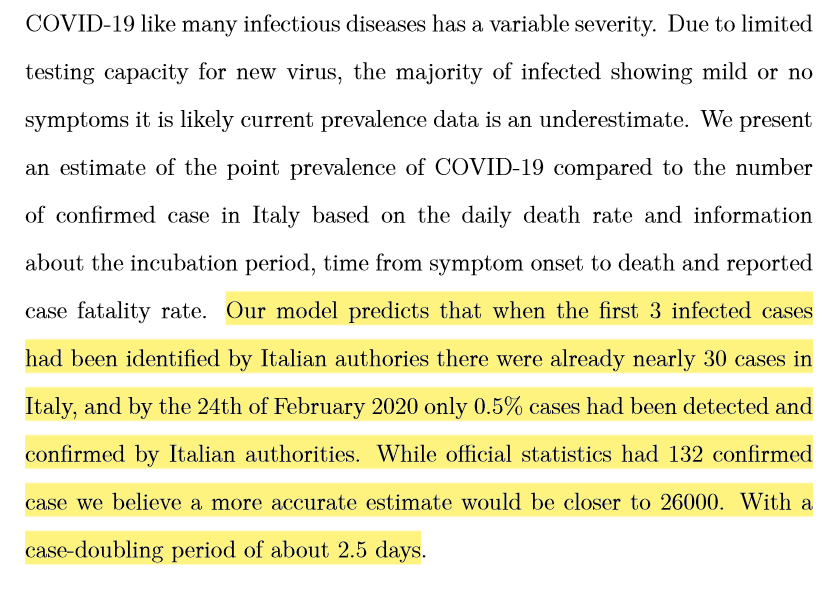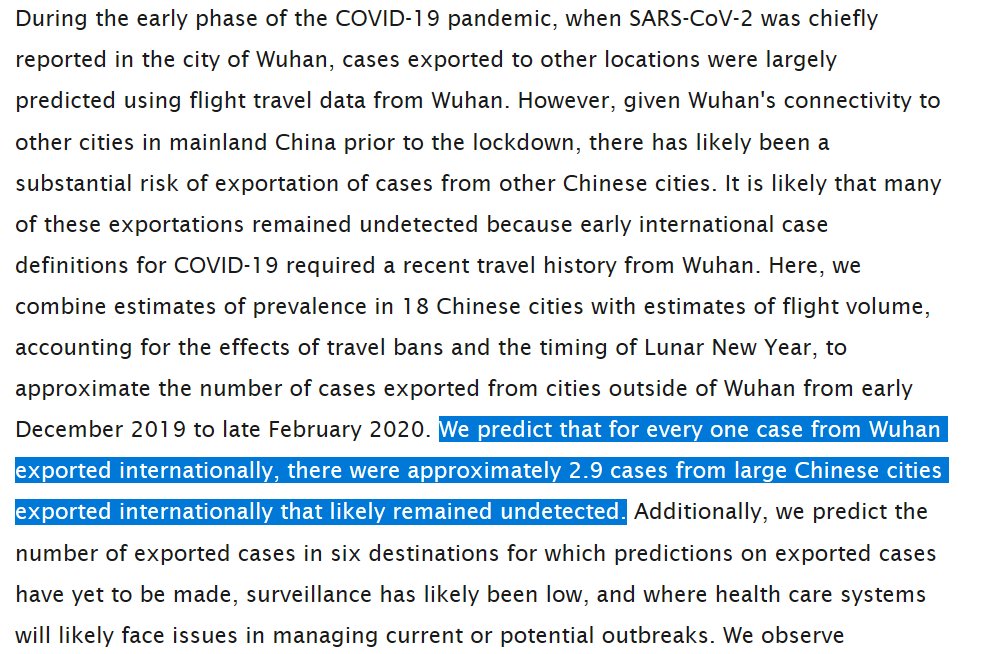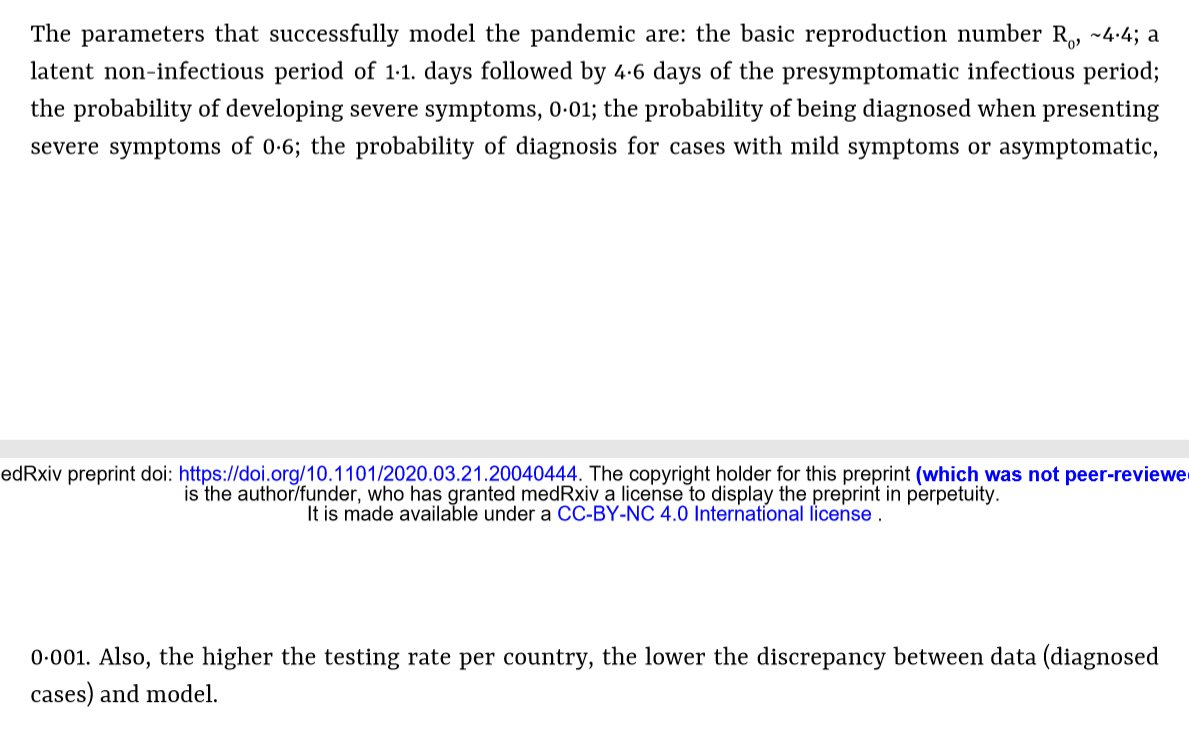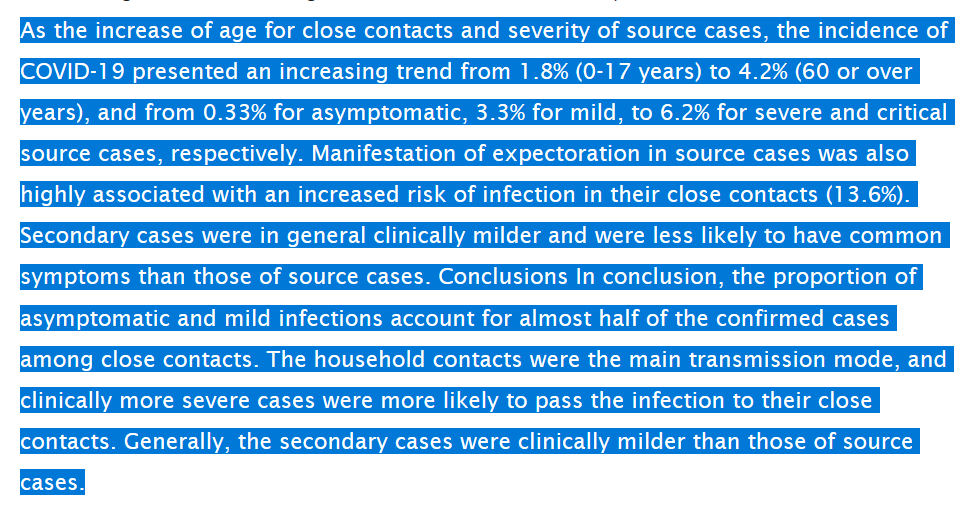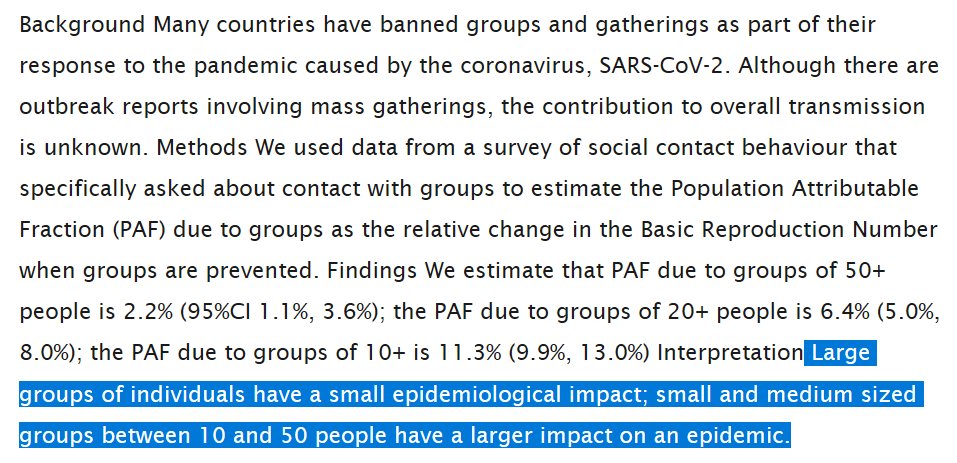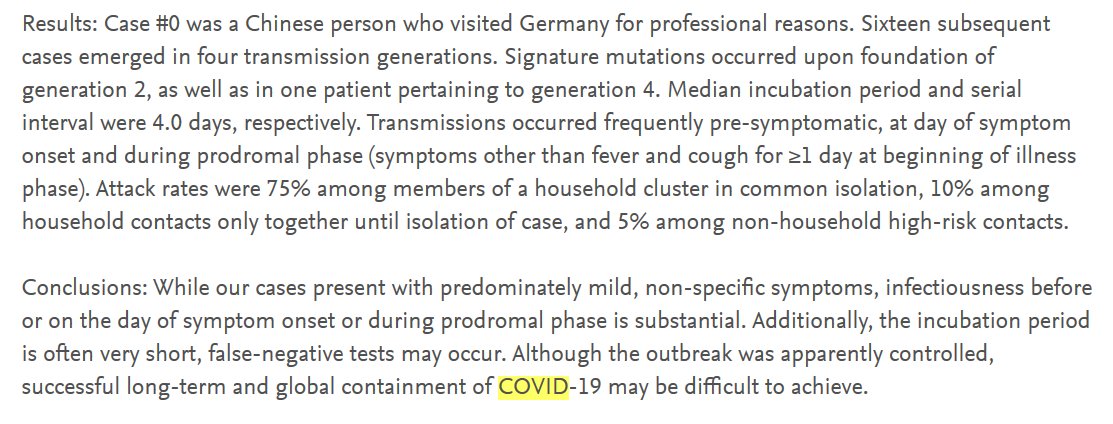You people drove me to it. I am going to do a thread, no idea how long it will be at this point, highlighting medical journal article and preprints about the testing and diagnoses problems with corona. Couple caveats before we get started. First, I am writing this because 1/n
quite frankly there is a flood of bad journalism. Tons of pieces about being written about the slow response and they say nothing about what the actual causes are. There are actual technical issues. This isn& #39;t just Gossip Girl set in a hospital but actual technical issues 2/n
Second, I& #39;m not taking responsibility for every piece of research presented. While I have tried to choose pieces that appear responsible in how they present the data from their studies, I am merely showing the pattern of inconsistency that exists in testing. Let& #39;s get started 3/n
What is notable is how widely acknowledged within the medical community the testing problem is. This is a problem not unique to any country. Entire papers on written, here from China, on the very problem journalists want to pretend doesn& #39;t exist 4/n https://www.medrxiv.org/content/medrxiv/early/2020/03/06/2020.03.04.20029538.full.pdf">https://www.medrxiv.org/content/m...
If you just do a simple comparison, even some South Korean researchers say that the CDC test family is more accurate than the WHO recommended family used in South Korea and many other countries 5/n https://www.preprints.org/manuscript/202002.0424/v1">https://www.preprints.org/manuscrip...
Are there other methods of testing? Yes, and in fact doctors are even working on raising the diagnosis rate by considering multiple tests together to raise the accuracy rate including swab, CT scan, and stool test https://www.medrxiv.org/content/medrxiv/early/2020/02/28/2020.02.25.20027755.full.pdf">https://www.medrxiv.org/content/m...
However, it is a lot more complicated than just running more tests. Even doctors and lab technicians will tell you the tests are very sensitive to a variety of factors 7/n https://www.medrxiv.org/content/medrxiv/early/2020/02/25/2020.02.22.20026617.full.pdf">https://www.medrxiv.org/content/m...
How sensitive are the tests? According to one piece of research depending from where exactly sample was taken from within the mouth and throat could change the probability of accurate diagnosis 8/n https://papers.ssrn.com/sol3/papers.cfm?abstract_id=3546084">https://papers.ssrn.com/sol3/pape...
According to another piece of research, it was less about the location within the mouth and throat and more about the type of fluid collected. This may or may not conflict with the previous piece of research 9/n https://www.medrxiv.org/content/10.1101/2020.02.21.20026187v1">https://www.medrxiv.org/content/1...
In fact, an evolving path of diagnoses seems to rely upon multiple markers including CT scans which can pick up lung activity that may be missed by other tests. Some researchers claim higher accuracy and sensitivity 10/n https://www.ncbi.nlm.nih.gov/pubmed/32157849 ">https://www.ncbi.nlm.nih.gov/pubmed/32...
Other researchers have adopted similar mixed diagnoses methods and while receiving improved diagnostic outcomes, do not quite reach the previous levels 11/n https://pubs.rsna.org/doi/pdf/10.1148/radiol.2020200642">https://pubs.rsna.org/doi/pdf/1...
Some Chinese researchers have even applied ML/AI methods to CT analysis with good results. Given the existing capabilities in this area of medical technology, this is a very likely probability to more accurately identify corona 12/n https://www.medrxiv.org/content/medrxiv/early/2020/03/11/2020.02.14.20023028.full.pdf">https://www.medrxiv.org/content/m...
Another Chinese team claimed to have tested their CT analytics for corona on Tianhe supercomputer claiming to have results in 30 second. Given the known diagnostic characteristics in the lungs, it is highly likely this is possible 13/n https://www.medrxiv.org/content/medrxiv/early/2020/02/25/2020.02.23.20026930.full.pdf">https://www.medrxiv.org/content/m...
It is even possible that CT scans may be an initially more accurate method to determine corona given the visual appearance on lungs but as noted it does not actually determine virus presence or type of virus present 14/n https://www.ajronline.org/doi/pdf/10.2214/AJR.20.22954">https://www.ajronline.org/doi/pdf/1...
I think one of the things that is so hard to grasp for even smart knowledgeable normally reasonable people is that we are truly fighting something that stands right beyond the edge of human knowledge in the 21st century. The issues I have highlighted here are not unique to 15/n
China, the United States, Singapore, or South Korea. They are not more adequately addressed by authoritarian communism or democracy. We& #39;re simply dealing with a scientific problem that currently stands just beyond the edge of human knowledge. It is not political incompetence 16/n
or corruption that is preventing finding a sensitive and accurate test it is medical knowledge. What I find most infuriating and I hope to not address this again is the number of people running around who have absolutely zero idea what the challenge is but write stories 17/n
Spout off on Twitter or appear on TV about all nature of nonsense but have zero actual understanding of what the problem is. To honest, the media and oped writers has done an absolutely awful job. They can& #39;t tell you why we don& #39;t have a high quality test they can& #39;t even 18/n
Tell you the difference between tests used or reported in different countries but dammit they have an opinion and they are going to shoe horn whatever is out there into their opinion. The record here of reporting the actual facts of the problem are abysmal. Done.
Addendum: I am NOT criticizing the doctors doing research or the difficulty in figuring out the best diagnostic or treatment. I am NOT criticizing Chinese, US, or South Korean, or fill in the blank doctors or medical regulators for throwing their hands up and say ok let& #39;s 20/n
See what works here and let& #39;s figure it out. These guys out their experimenting and trying different diagnostic tools and tests and different drugs or treatments to help people. We are at the edge of human knowledge and the doctors and regulators get that. Twitter journos don& #39;t
https://twitter.com/ExhaustiveWill/status/1239804797441544192?s=20">https://twitter.com/Exhaustiv...
https://twitter.com/BaldingsWorld/status/1240171064765734917?s=20">https://twitter.com/BaldingsW...
https://twitter.com/BaldingsWorld/status/1240172708282818560?s=20">https://twitter.com/BaldingsW...
https://twitter.com/BaldingsWorld/status/1240175002961375234?s=20">https://twitter.com/BaldingsW...
https://twitter.com/BaldingsWorld/status/1240176079295270913?s=20">https://twitter.com/BaldingsW...
https://twitter.com/BaldingsWorld/status/1240177714595692544?s=20">https://twitter.com/BaldingsW...
https://twitter.com/BaldingsWorld/status/1240182122721054721?s=20">https://twitter.com/BaldingsW...
https://twitter.com/BaldingsWorld/status/1240183309453295616?s=20">https://twitter.com/BaldingsW...
https://twitter.com/BaldingsWorld/status/1240184391575277569?s=20">https://twitter.com/BaldingsW...
https://twitter.com/BaldingsWorld/status/1240187066714959872?s=20">https://twitter.com/BaldingsW...
https://twitter.com/BaldingsWorld/status/1240188402793738241?s=20">https://twitter.com/BaldingsW...
https://twitter.com/BaldingsWorld/status/1240191945223200774?s=20">https://twitter.com/BaldingsW...
https://twitter.com/BaldingsWorld/status/1240202423349563392?s=20">https://twitter.com/BaldingsW...
Problem with false negatives so acute Chinese researchers are writing entire papers on the problem. According to this study patients with other viruses or comorbidities (think heart disease) were at higher risk of testing negative when actually positive https://papers.ssrn.com/sol3/papers.cfm?abstract_id=3551322">https://papers.ssrn.com/sol3/pape...
How big an impact does missing large numbers, via false negatives, of positive cases have on disease spread? It has enormous real world impact as it basically makes it impossible to control the spread of corona https://science.sciencemag.org/content/early/2020/03/13/science.abb3221">https://science.sciencemag.org/content/e...
While we have seen how difficult it is to accurate diagnose even the highly symptomatic, doctors are very worried about diagnosing the lightly or asymptomatic patients which seem to escape diagnosis at a higher rate https://www.nejm.org/doi/full/10.1056/NEJMc2001737">https://www.nejm.org/doi/full/...
Not only are lightly or asymptomatic cases very difficult to positively confirm, given the contagious time to symptomatic, many secondary transmission will have already been made with no reason to test https://www.ncbi.nlm.nih.gov/pubmed/32145466 ">https://www.ncbi.nlm.nih.gov/pubmed/32...
There are many factors and variables to consider but one of the biggest is how big is the pool of people that actually contract corona actually is? According to this study it is actually MUCH larger reducing the mortality rate to regular flu like levels
https://www.medrxiv.org/content/10.1101/2020.02.12.20022434v2">https://www.medrxiv.org/content/1...
https://www.medrxiv.org/content/10.1101/2020.02.12.20022434v2">https://www.medrxiv.org/content/1...
Given their frustrations with the existing testing inaccuracy, doctors did research on developing a purely diagnostic protocol to confirm a corona case. They claim to have developed high accuracy. Would be nice to test more but important https://papers.ssrn.com/sol3/papers.cfm?abstract_id=3551355">https://papers.ssrn.com/sol3/pape...
Public headlines tout mortality rates of 1-7% but that number is grossly misleading. Study after study is showing that corona has already hit roughly 10x the acknowledged number. When accounted for this brings the mortality rate down to flu like numbers https://www.medrxiv.org/content/10.1101/2020.03.14.20036103v1.full.pdf">https://www.medrxiv.org/content/1...
People are using a wide variety of methods, from a wide variety of countries, focusing on different countries and estimations samples but reach large discrepancies. This means almost all corona cases produce no symptoms or mild symptoms. https://www.medrxiv.org/content/10.1101/2020.03.14.20036178v1">https://www.medrxiv.org/content/1...
We need to have a significantly better understanding of what we are dealing with and the risks we are running. I tried to make this point the other day that the probability China caught the FIRST or near first case was effectively zero
https://www.medrxiv.org/content/10.1101/2020.03.10.20033761v1">https://www.medrxiv.org/content/1...
https://www.medrxiv.org/content/10.1101/2020.03.10.20033761v1">https://www.medrxiv.org/content/1...
I don& #39;t mean to keep pounding this but the evolving research from different countries is very different that the end of civilization story that is being pushed. This research is from South Korea https://www.sciencedirect.com/science/article/pii/S1201971220301508">https://www.sciencedirect.com/science/a...
One question is why do some places have severe outbreaks and others don& #39;t? Italy isn& #39;t Italy but rather region of northern Italy. Chinese research says elderly exposure to transmitting family members (multigenerational housing) is key to case severity https://ccforum.biomedcentral.com/articles/10.1186/s13054-020-2833-7">https://ccforum.biomedcentral.com/articles/...
One of the theories about false negatives was that viral loads between mild, moderate, and severe cases were different. In Italy, they found no statistical difference in viral loads between symptomatic and asymptomatic cases https://twitter.com/DrEricLevi/status/1242190832867799040?s=20">https://twitter.com/DrEricLev...
Italian researchers are estimating there are 15x the number of cases as the confirmed cases. Also worth noting their estimated R0 closely matches a recent Chinese work on the estimated Italian R0 https://www.medrxiv.org/content/medrxiv/early/2020/03/20/2020.03.17.20037689.full.pdf">https://www.medrxiv.org/content/m...
Important note: this is taking a fixed snap shot estimate at the earliest stages of the outbreak but would estimate that cases were under counted by a factor of 200! Of course that would come down but worth noting https://www.medrxiv.org/content/medrxiv/early/2020/03/20/2020.03.17.20037697.full.pdf">https://www.medrxiv.org/content/m...
Now this is interesting. Chinese team of researchers is saying in Wuhan that as cases of corona increased cases of flu decreased. What is notable is that they are back testing samples. This could stem from flu sufferers not going to the doctor but notable https://papers.ssrn.com/sol3/papers.cfm?abstract_id=3555239">https://papers.ssrn.com/sol3/pape...
Many issues have yet to be explored, especially around just assembling data. These authors point out that countries with lower quality medical care and systems systematically undercount the number of corona cases. Numbers are not what they appear https://www.ncbi.nlm.nih.gov/pubmed/32205091 ">https://www.ncbi.nlm.nih.gov/pubmed/32...
<Whispers into the cold dark void of nothingness>: Track and trace is pointless so just put it on the blockchains https://www.medrxiv.org/content/10.1101/2020.03.23.20038331v1">https://www.medrxiv.org/content/1...
I wouldn& #39;t yet say the research is overwhelming but the research is strong and getting stronger of just how much more widely spread. WHO assumes an R0 of roughly 1.5-2.5. Most research finds 3.5-5. That means corona is MUCH more widely spread than believed
https://www.medrxiv.org/content/10.1101/2020.03.21.20040444v1.full.pdf">https://www.medrxiv.org/content/1...
https://www.medrxiv.org/content/10.1101/2020.03.21.20040444v1.full.pdf">https://www.medrxiv.org/content/1...
A key question on spread is why do we have hot spots and others with minimal growth? A lot seems to have to do with the method of transmission and specifically sustained transmission specifically from family members. Italy & China=intergenerational housing https://www.medrxiv.org/content/10.1101/2020.03.24.20042606v1">https://www.medrxiv.org/content/1...
Why does sustained contact matter? It changes the population dynamics. You are less likely to get a severe case from standing next to someone on the subway than from a family member. Population dynamic research finding something similar https://www.medrxiv.org/content/10.1101/2020.03.20.20039537v1">https://www.medrxiv.org/content/1...
At some point, we& #39;re going to need a better strategy than everyone live in a cave by yourself until this passes https://papers.ssrn.com/sol3/papers.cfm?abstract_id=3551335">https://papers.ssrn.com/sol3/pape...

 Read on Twitter
Read on Twitter